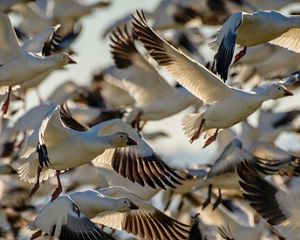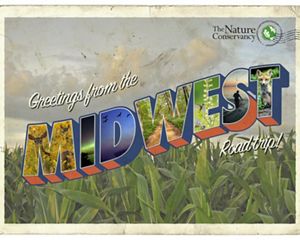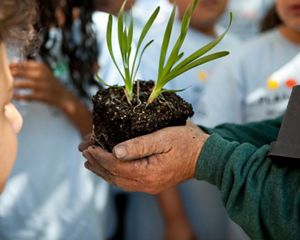Illinois Nature Through the Seasons
From bustling prairies and serene rivers to lively wetlands and ancient forests, Illinois has a bounty of beautiful places to explore year-round.

In Illinois, each season brings something new. Enjoy an autumnal stroll through vivid woodlands or become a wildlife detective investigating tracks in the glimmering winter snow. Explore the beautiful nature of the prairie state year-round using the tabs below!
Winter
Midwest winters are magical, and don’t let anyone tell you otherwise! It’s one of the best times of year to observe nature in its most tranquil state. Bare trees offer fantastic bird watching views and scenic vistas are the most open of the year. Plus, who doesn’t want to play in the snow?
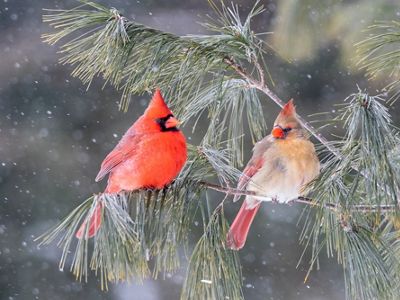
Birdwatching Wonderland
Leafless trees make for a great birding backdrop. In the Cache River Wetlands, bird nests and bright green Christmas ferns are easily spotted while great blue herons arrive from the north and barred owls start courting one another. Waterfowl enthusiasts will especially enjoy visiting spots along the Illinois River like Emiquon and Spunky Bottoms. In December, be sure to admire the last of fall migratory waterfowl in these areas like cold weather ducks such as the common merganser, goldeneye and bufflehead before bald eagles reach their peak in January.
Meanwhile, large swaths of grasslands like Midewin welcome winter raptors such as long and short-eared owls, rough-legged hawks, northern shrikes and northern harriers. Many raptors such as sharp-shinned hawks and prairie falcons also fly over Nachusa Grasslands where barred owls call "who cooks for you" from dusk to dawn. Other birds such as redheaded woodpeckers, harriers, redtail hawks, chickadees, juncos, cardinals and mourning doves can be seen at Kankakee Sands.
Northern Cardinal
Song calls of the northern cardinal.
A northern cardinal is recorded making its well-known song.

We Can’t Protect Nature Without You
Sign up to receive monthly conservation news and updates from Illinois. Get a preview of Illinois’ Nature News email.
Winter Wildlife
Grab a magnifying glass and become a wildlife detective on a snowy day! From the common hoofprints of white-tailed deer and red fox paw prints to the slide marks left by playful otters, you never know whose tracks you’ll spot in the carpet of glistening snow throughout TNC's preserves. You might even spot a pair of antlers as rutting season comes to end for bucks!
In winter, breeding season for bobcats and beavers begins while red foxes begin courting in the forest at the Cache River Wetlands. Meanwhile, solitary gray foxes are hunting for food in the evenings at Indian Boundary Prairies and muskrats are busy building their huge lodges amidst Spunky Bottoms’ ice-covered wetlands. In February, wildlife becomes more active in Illinois wetlands as skunks begin to mate, chorus frogs start to sing, barn owls begin to nest and the first bluebirds arrive.
Wildlife Detective
Winter’s snows provide the perfect chance to flex and grow your wildlife tracking skills. From the common hoofprints of white-tailed deer to the distinct paw prints of coyotes, you never know whose tracks you’ll spot in the snow throughout TNC's preserves.


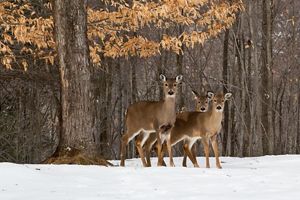

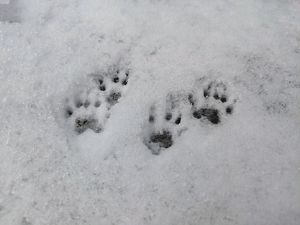

Coyote Pawprint: Coyote pawprints are a common sight in the snow. © Charles Larry

Coyote: Coyotes are present in many Illinois counties. © Lisa Bourgeault /TNC Photo Contest 2019

White-tailed Deer: White-tailed deer can be spotted across the state. © Kent Mason

Red Fox Tracks: Winter is an ideal time to practice identifying wildlife tracks thanks to how well snow can hold prints. © James Day/TNC Photo Contest 2022

Racoon Tracks: Snowfall makes for excellent opportunities to practice your animal track ID skills! © Lily Mullock/TNC
Spring
As the ice thaws, nature begins to blossom across Illinois. From the weird and wondrous creatures that emerge in the Midwest’s iconic wetlands to hundreds of thousands of birds gliding through the skies during migration season, there’s lots to see and do at The Nature Conservancy's Illinois preserves in the spring!
Spring Migration
March is peak migration season, and there’s no shortage of preserves to watch hundreds of thousands of birds like snow geese and white pelicans sail through the air! Smaller feathered friends like warblers, sparrows, kinglets and more can also be spotted taking a flying break across the state.
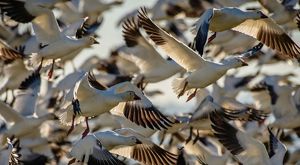
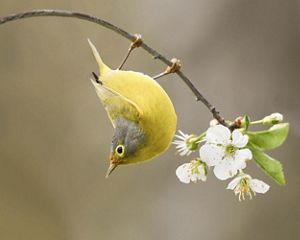
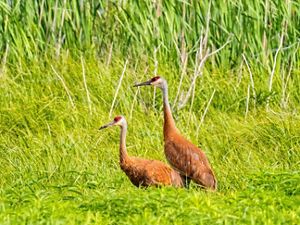
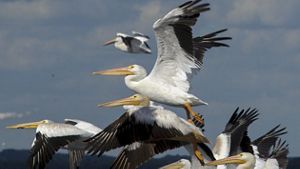
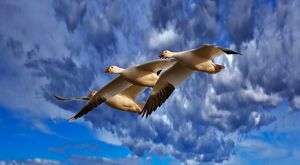

10,000 Strong: Snow geese arrive to Emiquon in spring and fall and can form massive flocks of 10,000 or more individuals! © Michael McAuliffe

Acrobatic Warbler: Nashville warbler hanging upside in a tree. © Andy Raupp /TNC Photo Contest

Sandhill Crane Family: Baby sandhill cranes, or colts, can be seen taking a spring migration pit stop at prairies like Indian Boundary Prairies and Nachusa Grasslands in March. © Charles Larry

Wings Up: Pelicans and birds take flight at Emiquon preserve. © Laura Stoecker Photography LTD

Snow Geese Trio: The most famous and recognizable migratory visitor at our Emiquon preserve is the snow goose. © Gordon Lass
At Emiquon, it’s not uncommon to see flocks of snow geese up to 100,000 strong. If you don’t have a chance to grab those binoculars and head out to birdwatch, be sure to tune into our live Emiquon migration camera! American bald eagles also spiral and chase each other in mid-air as they begin courtship rituals at this time. At Indian Boundary Prairies and Midewin, sandhill cranes also stop to refuel from their migration journey in March.
Wet areas aren’t the only spots to catch spring migration live. In April, ruby-crowned kinglets, blue-winged teals, loggerhead shrikes and upland sandpipers all return to Midewin National Tallgrass Prairie. Early migratory birds like sandhill cranes, turkey vultures and eastern bluebirds also come back to call out their territory at Nachusa Grasslands.
Wicked Cool Wetlands
Spring is the perfect time to get your feet wet and dip into the world of wetlands! Wetlands like Emiquon, Spunky Bottoms and the Cache River Wetlands are rich with a wide variety of wildlife to admire. From novel birds like black-crowned night herons and wood ducks to a unique amphibians like chorus frogs and spotted salamanders, there’s no shortage of species to spot on a visit to a Midwest wetland.
In March, waterfowl such as mallards, common merganser and ring-necked duck begin utilizing the wetlands along the Cache River again. As warmer nights arrive in April, the song of spring peeper frogs can be heard in Spunky Bottoms while snakes and other frogs emerge from their hibernation to the floodplain wetlands. Meanwhile, wildlife abounds along the Mackinaw River with great blue herons, red-tailed hawks, soft-shelled and snapping turtles, river otters, raccoons, red foxes, coyotes and groundhogs walking the grounds.
Not to mention that wetlands serve several essential functions in our ecosystems like holding soil carbon, providing water storage to reduce flooding, filter pollutants from water, provide critical habitat for a diversity of life and more. Plan a trip to thank a wetland this spring!
Summer
From vast, blooming prairies to bubbling wetlands teeming with life, the hot summer heat offers some of the liveliest nature sights in Illinois.

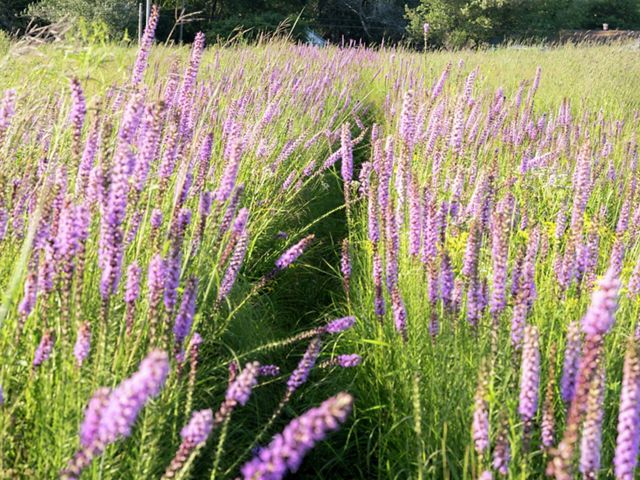
Summer Blooms
The prairie state's vibrant wildflowers and sweeping golden fields thrive from late May through August. Native plants like purple coneflower, wild lupine and bergamot boast vivid colors in prairies at Nachusa Grasslands, Indian Boundary Prairies and Midewin National Tallgrass Prairie. Lavender hues of bird's foot violets, bright orange blooms of butterfly weed, delicate white petals of New Jersey tea, blue-violet flowers of wild lupine and soft pink blooms of beardtongue decorate the Kankakee Sands Preserve in June. These sweeping prairies also make for the perfect backdrop for admiring majestic bison at Nachusa Grasslands.
Meet the underdogs of pollination
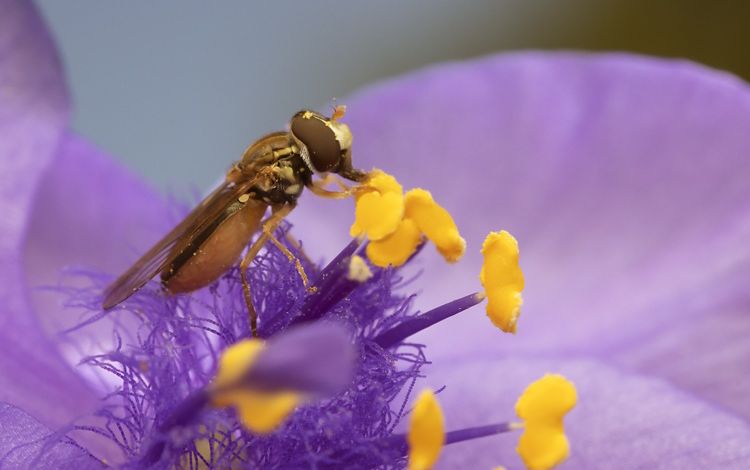
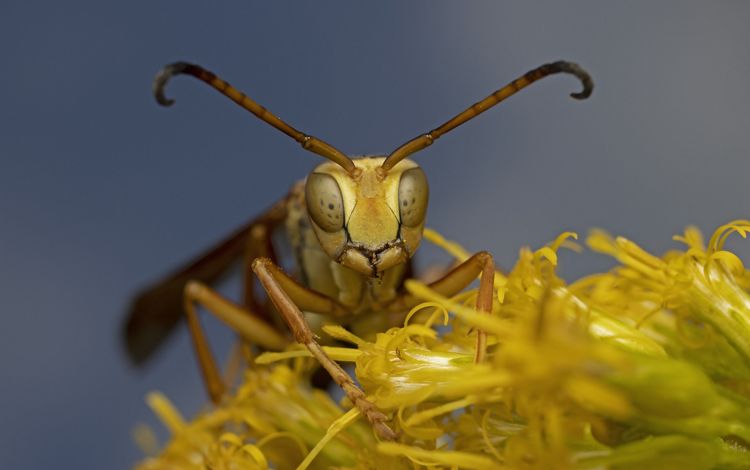
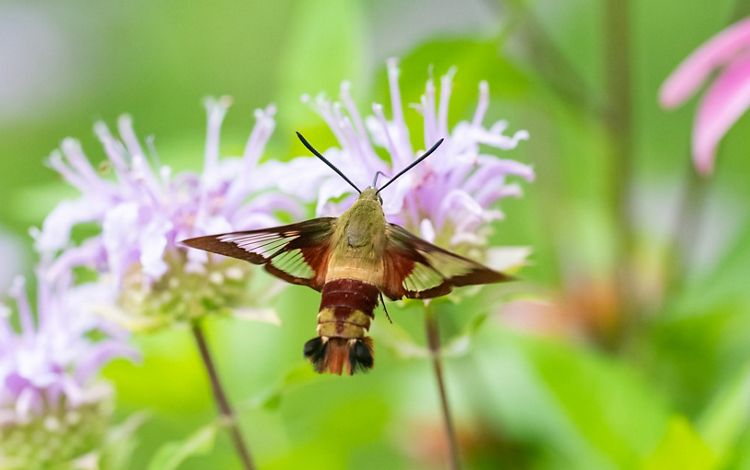
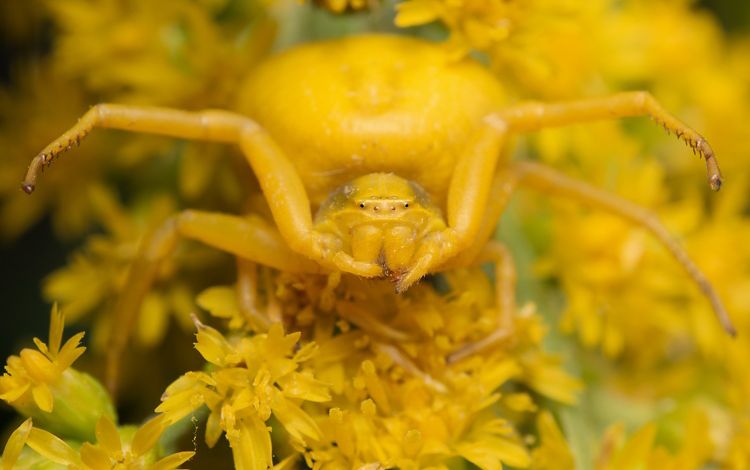

Pollinator Paradises
All around us, pollinators are bustling in Midwest meadows. Thanks to the prescribed fires completed in the spring, prairies at Nachusa Grasslands and Indian Boundary Prairies are lush and green, providing a paradise for pollinators amidst native plants like pale purple coneflowers and butterfly milkweed.
Bees and hummingbirds are darting from blossom to blossom while butterflies like Aphrodite and the up-and-coming Regal Fritillary are beginning to be found in abundance, perching on flowers as they sip nectar. Lesser-known pollinators like spiders, flies and beetles are also working tirelessly to help essential ecosystems thrive.
Autumn
Breathtaking fall hues accompany the dropping temperatures in Illinois as the last blooms of summer fade. It's the perfect time to get outside for camping, hiking and especially birding as migrating birds begin their long journeys south.
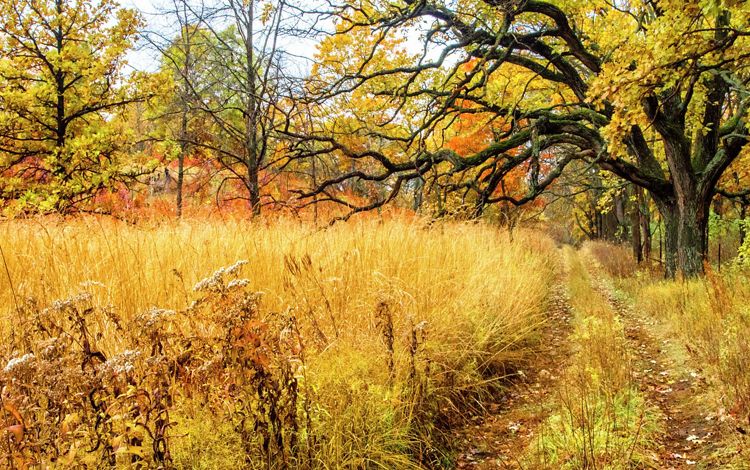
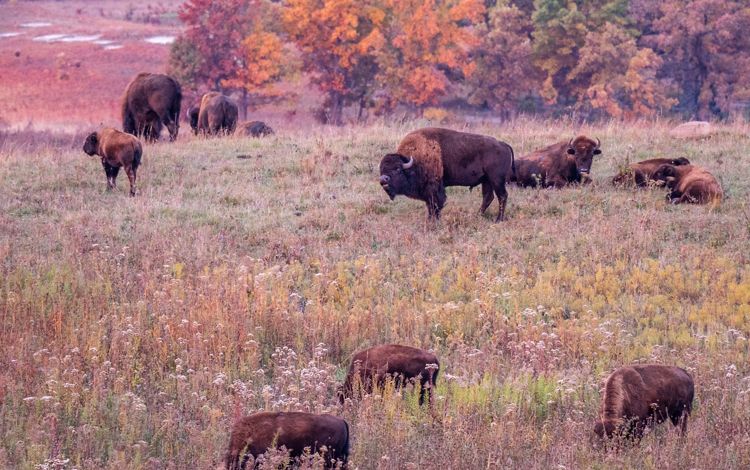

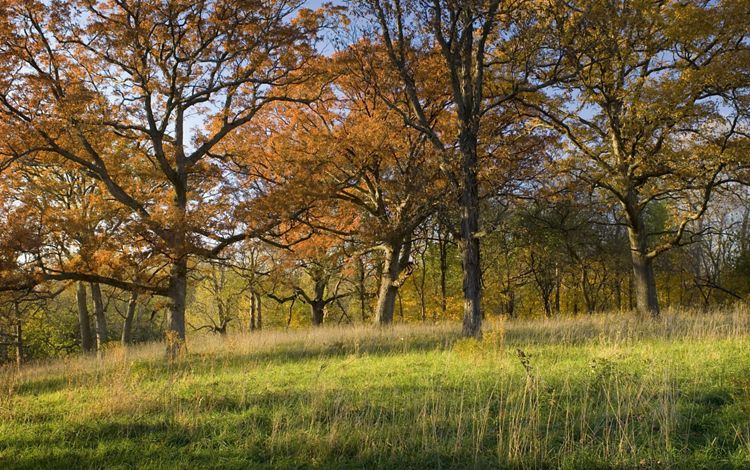
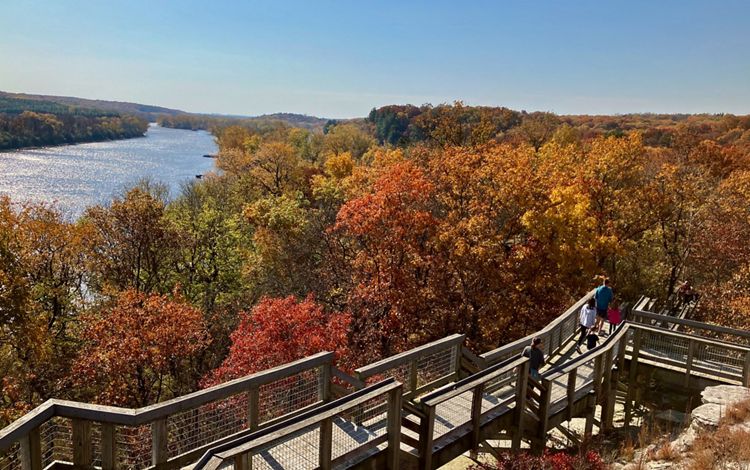
Vivid Foliage
Cooler air and shorter days bring a vivid palette to natural areas across the state. In late September, gentians, asters and ferns bloom in prairies like Indian Boundary Prairies and Kankakee Sands. Prairie grasses begin to adopt bright shades of red, orange and yellow in October, creating a sea of fall colors on a windy day at preserves like Midewin and Nachusa Grasslands.
In November, bald cypress tree needles turn crimson red in the Cache River Wetlands and autumnal colors abound at Kankakee Sands when bottle gentian bloom, sassafras trees turn orange and red, oaks turn brown and yellow, and little blue stem grass turns orange.
Birds on Vacation
With fall migration upon us, there’s no shortage of bird watching spots to explore. Emiquon and Spunky Bottoms offer some of the best migration views (both in-person and virtually)! Large concentrations of great egrets, little blue herons, great blue herons, black-crowned herons and the occasional snowy egret can be seen around lake margins and shallows at preserves along the Illinois River in September.
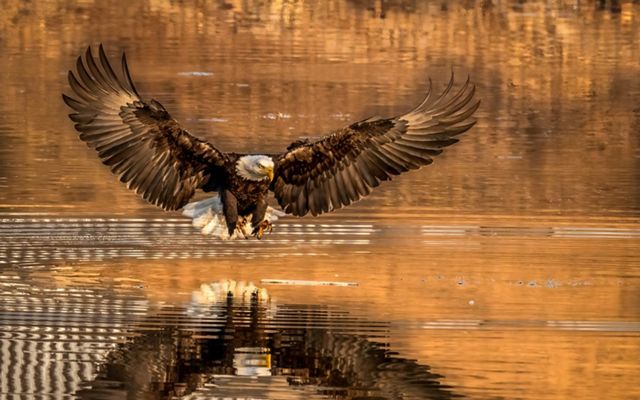
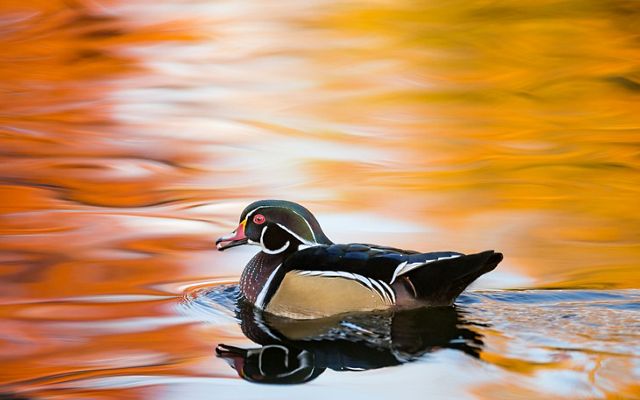
October brings kettles of migrating raptors such as red-tailed, rough-legged and occasional red-shouldered hawks can be seen gliding wind currents up and over Emiquon's river bluffs. Later in the month, coots and waterfowl such as mallards, gadwell, pintail, and widgeon begin arriving in larger numbers.
Once the leaves begin to fall in November, American bald eagles begin to arrive in large numbers in the Illinois River Valley while winter raptors such as short-eared owls, northern harriers and additional red-tailed hawks appear at the Midewin. Cormorant migration peaks and wood ducks head south while snow buntings begin to arrive at the Cache River Wetlands.




